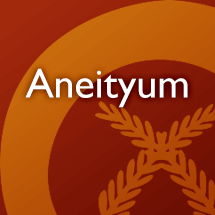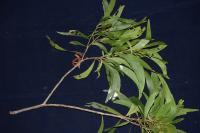Your search for * in agriculture has returned 100 entries
ahtowan
v. to weed
bookmarkaihon
v. to spit on leaves; to chew leaves for sickness
bookmarkauhorohos
v. to weed; to clear land
bookmarkauoc
adj. unripe
bookmarkecetaig jai
v. to come out, as banana fruit
bookmarkehla
adj. unripe; also "ehlai"
bookmarkehlek
v. to seek food, as taro; to gather, to reap
bookmarkehlili
v. to burn ground for planting
bookmarkehpai
v. to peel off bark
bookmarkelgai
v.n. expand as a leaf
bookmarkereuc
v. to shake a branch; to make fruit fall. pl: "ereucereuc"
bookmarketti
v. to split leaves
bookmarketuko, cai
v. to split wood
bookmarkeucte
v. to begin to blossom
bookmarkeucupupu (nieg)
v. to swell, as reeds when near blossoming
bookmarkheto
v. to grow again, as hair, feathers, plants; to come out, as teeth
bookmarkhui asan
v. trees; fruit
bookmarkidahod
v. to sprout largely; also "ujipsotan"
bookmarkidi
adj. stringy, watery, as taro; also "ede"
bookmarkilihilo
adj. soft, as an infant’s foot, or new leaves.
bookmarkinceimu
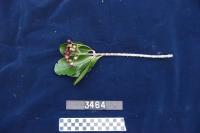
n. tree, 7 m tall (collection: Gregory M. Plunkett #3464)
Example: This is a sacred plant. The wood is used for rafters in house building. To plant taro, take an 8 cm diameter stick, sharpen it and use to make holes for planting. The stick is as long as needed for a person to stand while making the hole.
bookmarkincipinti
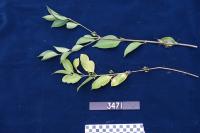
n. shrub, 2. 5 m tall (collection: Gregory M. Plunkett #3471)
Example: 1. The fruit of this species are poisonous. In ancient times the ancestors used the "fork" (branch growing out of main stem) of this wood to catch lobsters between the two parts of the stem. 2. Fertilizer for taro, in case you are not cleansed, it is ok as this plant as fertilizer will cleanse you.
bookmarkincipiñti
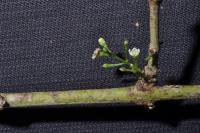
inciñpiñti
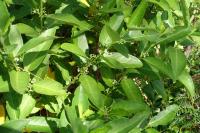
incoujahao
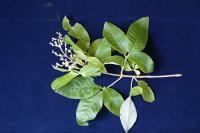
n. shrub, 2 m tall (collection: Gregory M. Plunkett #3548)
Example: The forked stick of this plant is used as a pole to hold the outrigger on a canoe. Children blow the small fruits of this plant through the hollow petioles of the papaya leaf or a hollowed bamboo stem as a game. As an aphrodisiac, two handfuls of the leaves of this species are boiled in fresh water and men drink these for 7 days. The next week they will be "strong." People cannot have sex while they are drinking this remedy, but then the next week when they have finished the treatment, they will be "very strong."
bookmarkincoujahau
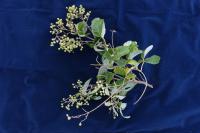
n. tree, 6-8 m tall (collection: Gregory M. Plunkett #3218)
Example: 1. Take a handful of leaves, squeeze with the hands into 1/2 liter of water, drink when tired; said to open the "blood nerves" and to purify the blood and make the muscles of the male sexual organ strong. 2a. When a person is planting watermelons in the garden, as the vines grow, split them and perforate the vines with a sharpened stick. This practice is said to ensure that the watermelons will be as prolific as the seeds in Vitex. 2b. If you plant vines in your garden like cucumber, beans, melons, pierce the stem with a small sliver of this branch and it will make the vine have more fruit.
bookmarkingejei wou
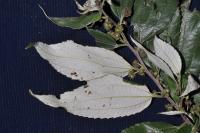
n. tree, 4 m tall (collection: Gregory M. Plunkett #3647)
Example: 1. The straight poles of this plant are sharpened and used to plant kava, and only for kava. Not used for planting other crops. 2. Special for catching eels in fresh water, poke stick with leaves into hole where eel lives and they don’t like it so they come out and you catch them, by cutting with knife.
bookmarkinhupnan
n. first fruits
bookmarkinlapnan
n. a plantation
bookmarkinlelitai
n. bush land; uncultivated land
bookmarkinleuc nipji nakevai
n. a bolt of pandanus leaf
bookmarkinlopotjap
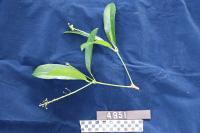
n. shrub to 2 m in height, flowers white. In agricultural field. (collection: Michael J. Balick #4951)
Example: The young leaves are used to protect food as it is being cooked on an earth oven. To prepare the oven, pile hot stones, then put a layer of leaves on the stones, and then place hot stones on top of the leaves. To make a hot oven, the stones are lined in a pit, a fire lit, more stones placed on firewood and the top layer of stones gets very hot. Then, remove the stones from the top of the wood, and cook food o the bottom layer of stones, add a layer of leaves, place the food on top of this, then cover with a layer of leaves and then pile the rest of the hot stones on top of the leaves.
bookmarkinmerei
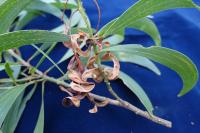
n. tree to 2 m tall,dbh 40 com (collection: Michael J. Balick #4877)
Example: To treat a local disease (that causes pain in the stomach) called "Namya," peel off the outer bark, collect 1 handful of inner bark, boil with 1/2 liter of water, drink warm, 3 cups/daily, for 3 days. At that point the person will feel that "the weakness is no longer in the body." After 3 days of treatment the pain in the stomach goes away. Wood is used for posts; leaves for compost for holes that people will plant taro in--line the bottom of the hole before placing soil and taro in it.
bookmarkinrosi
n. a clearing of bush or reeds
bookmarkinteses
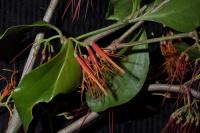
n. parasite on branches of Geissois denhamii tree, growing in dense rainforest. Flowers orange-red. (collection: Gregory M. Plunkett #4028)
Example: 1. This plant is known to kill other trees and is regarded as a parasite. 2. The plant is related to kastom use regarding the separation of two lovers--more information witheld.
bookmarkinteucjip
n. bush land where forest trees grow; also "intucjip"
bookmarkintidin
n. a crop, but not the first ripe
bookmarkintinan mese
n. dry land planted
bookmarkintucjip
n. bush land; also "inteucjip"
bookmarkinwah
n. food or seed of all sorts; the juice of any plant
bookmarkisji ariko
v. to gather beans
bookmarkisjid
v. to chip off small branches
bookmarklelahapol
n. a cultivated field
bookmarklelen
adj. unripe
bookmarkmure
adj. ripe, as arrowroot; also "murre"
bookmarknamlau elwa
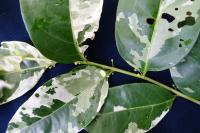
n. tree to 15 m tall, dbh 40 cm (collection: Michael J. Balick #4859)
Example: The wood of this tree is good for carving. The fibers go in one direction so it is easier to carve, for example, to make a kava bowl. In general, this is the species used to make kava bowls. If your kava is not strong, then making it in this bowl will make it stronger. The kind of bowl made from this tree has a handle on each side of the bowl and it is held with 2 hands. The place name Anumwmamlau is named after this tree. There are said to be two types of this tree--one with all green leaves (this specimen) and one with white and green leaves. If a person is going to a Tabu place and is concerned about spirits, they should take a handful of these leaves and wash the body all over with it--take a swim (bath) with it. Then the person can go to the Tabu place without risk. There are other unspecified spiritual uses of this tree. The second part of this local name "elwa" refers to the variegation of the leaves.
bookmarknanad
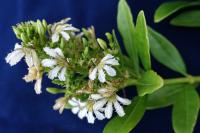
nanad
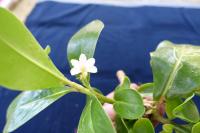
nanad
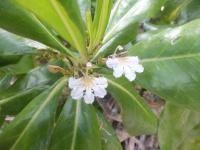
n. shrub. Growing near the beach. (collection: Ashley A McGuigan #4)
Example: 1. Dried branches from this plant can be used to roast vegetable crops that women eat if they have problems becoming pregnant. 2. Firewood, burns well. 3. Some people will eat the green fruit for protection against black magic. Eat 5 fruits for this. Eat it only once – will last for a year.
bookmarknanad cop̃ou
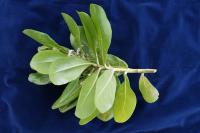
n. small shrub, 0. 5 m tall (collection: Gregory M. Plunkett #3219)
Example: 1. A stimulant plant. If a person is going to their garden early in the morning before the sun come up, break 2 top young leaves and chew and swallow the liquid, spitting out the fiber. This makes the person able to work harder and not feel tired while in the fields. It was noted that "a person can do the work of many people if they chew this." 2. The leaves are used for fertilizer for taro--put a bunch of leaves in a hole were taro is to be planted as a compost/antibiotic. This practice is said to kill all of the bad organisms such as bacttively impact the health of the taro plant. 3. This species is collected in the coastal areas, and is different from the one that looks similar to it, that grows in the forested areas. People take 4 leaves, chew leaves, swallow juice, gives energy to work hard the entire day. For fishing, take lots of ripe fruits and put in pocket, you will be able to catch a lot of fish. It brings good fortune when fishing. Roots – take one root, wash where a woman is giving birth to a newborn baby, give a drop of the juice from the root to clear the mucus in the throat.
bookmarknapojev
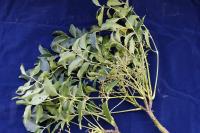
n. tree to 5 m, dbh 10 cm (collection: Michael J. Balick #4889)
Example: The leaves are used to cover meat when baking it in a stone oven (inmawum). This will soften the meat and keep it moist. Used when other species of this genus are not available, for example if you are in the bush.
bookmarknapuig
n. a reed frame for supporting the tendrils of yams
bookmarknapuke
n. a mound or hillock for yams
bookmarknarahcai
n. a table made of reeds, for drying arrowroot, etc.
bookmarknaravi
n. a gathering of inmops or horse-chestnuts
bookmarknared
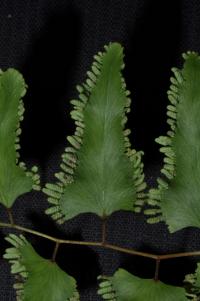
n. vine climbing on trees, growing in dense rainforest. (collection: Gregory M. Plunkett #4090)
Example: 1. The rachis of an old plant is braided as a rope to tie sugar cane, house posts, and fences. The rachis is used when green, and as it dries in form, it remains functional and lasts for a long time (10-12 years).
bookmarknariko cei
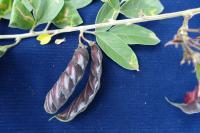
n. fence-forming shrub, 1. 5 m tall (collection: Gregory M. Plunkett #3206)
Example: 1a. Cultivated in gardens. Cook seeds of this species or eat them raw before they are fully ripened. The green pods can also be cooked in a fire and eaten. 1b. Cultivated plant for its edible seeds, can be prepared in a pot of bamboo. OR could take branches w/ seeds and put directly on the earth oven for cooking. 2. Planting this species adds nitrogen to the soil--grow it on soil that is said to be "tired."
bookmarknasanma
n. the juice of the breadfruit tree
bookmarknasau
n. a crop; fruit which grows spontaneously
bookmarknauhap̃
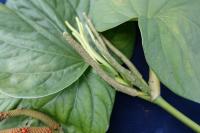
n. small tree or shrub, 2 m tall (collection: Gregory M. Plunkett #3210)
Example: 1. Use the leaves to put in a hole where taro is being planted, as a sort of fertilizer--it rots easily and adds value to the soil. To protect a person from spirits if you are going to an unfamiliar place, take the young inflorescence and put behind your ear. This plant is a sort of "spiritual kava." 2. Flowers are put behind one ear, any side, to allow a person to pass through sacred places. For protection of the spirits especially if you are familiar with this place. On EAST SIDE, put one leaf under pillow before sleeping so that the lady spirit will not disturb the person. Only for men – spirit likes men, and wants to have sleep with them. If she gets pregnant, you must follow her to look after the kids in the spirit world so you leave this one (you die). 3. The small, straight stems of this plant are used as rafters to weave thatch. 4. Children make bows and arrows from the stems as well as spears for fishing.
bookmarknauhap̃ apeñ
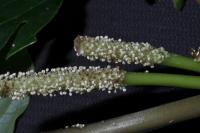
necsap̃
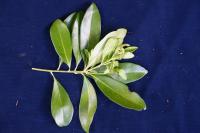
n. shrub, 2 m tall (collection: Gregory M. Plunkett #3534)
Example: This tree has very hard wood. 1. Use the small stems to plant dry land or swamp taro, sharpening the end and pushing it into the ground to make a hole. 2. It also is useful for fence, posts for houses. 3. Small stems are also used to make a comb for the hair. 4. Plant pole for taro kava. 5. A branch is shaped and used to husk coconut. 6. The wood is hard and in ancient times people would take a forked piece and put string on one side of it, sharpen the other side and use with the string as a fish hook – need to keep rope tight until it is in the canoe. Do not give it slack – strong use AAM 17.
bookmarknednañlelcei
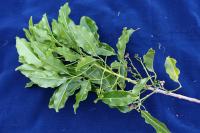
negaivaine
n. a bunch of grapes; also "nigaivaine"
bookmarknehgan
n. a stock; a bunch, as of fruit; also "negan" or "nigan"
bookmarknehtumta
n. land newly planted with taro
bookmarkneihon
n. a chewing of wood, and spitting it on sick people, to cure them; also "naihon"
bookmarkneijis ieg
n. a bundle of reeds for a torch; a torch
bookmarknelmai
n. a tree from the inner rind of which fishing lines and nets are made. na elmai or elumai, cloth
bookmarknetcetas
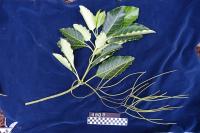
netcetas
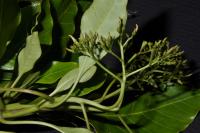
n. well branched tree, 15 m tall (collection: Gregory M. Plunkett #4084)
Example: 1. The name means "explosion". Further information about the plant withheld.
bookmarkneyo
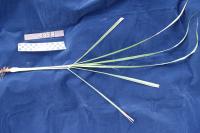
n. grass to 70 cm tall, sterile. Cultivated at the side of a field. (collection: Michael J. Balick #4958)
Example: The leaves and stems are boiled in water to make tea. The base of the leaves (the whitish part) is used to cook foods that have a strong odor, such as goat or shark. The base is sliced and put in the soup and this helps to keep the smell of the goat or shark from infusing through the rest of the food and making it less palatable. In some areas of Aneityum, such as in cassava fields, there is a fungus that kills the crops. This species is interplanted with the crops to kill that fungus and protect the crop plants.
bookmarknida
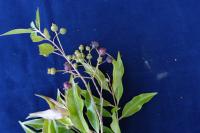
nida
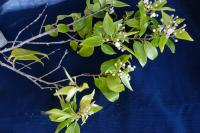
n. tree, 1. 5 m tall (collection: Gregory M. Plunkett #3685)
Example: Sharpen the end of a straight pole of this tree and use it to plant taro in a swampy area. For family planning. Scratch away the inner bark into your hand and mix with 1/4 cup salty water. Woman the uses (not specified how to use) it after her monthly period to protect her from getting pregnant.
bookmarkniditau
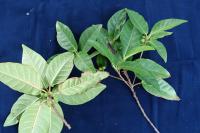
n. tree to 8 m, dbh 20 cm (collection: Michael J. Balick #4867)
Example: Fruits are sweet and edible when ripe. This plant is an indicator of rich soil, a good place to plant one’s garden. The leaves of this species are mixed in with other leaves for an unspecified local medicine that helps to remove spiritual sickness
bookmarkniditau
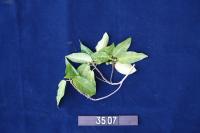
n. tree, 3 m tall (collection: Gregory M. Plunkett #3507)
Example: The young leaves and fruits are edible; the fruits are eaten ripe. This species is used for firewood as well as house posts, but they don’t last as long as other types of wood so they are used in temporary structures. A sacred plant on Aneityum. Name means linkage between this world and the spirit world. Agriculture – you find this tree ?? it means that the land is fertile. Birds eat fruits; people burn the tree to release ash and fertilizer and grow their taro around it – it will give more food. Message plant – if someone puts a long brown on your door or in your garden, it means “why are you here?” Implies that you should go back to where you belong. You don’t belong in this place. For example instead of quarreling over land dispute, put the branch and it means that you should leave this place.
bookmarkniditau
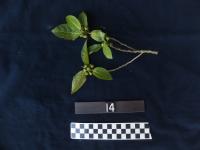
n. tree. Found in the village. (collection: Ashley A McGuigan #14)
Example: The young leaves and fruits are edible; the fruits are eaten ripe. This species is used for firewood as well as house posts, but they don’t last as long as other types of wood so they are used in temporary structures. A sacred plant on Aneityum. Name means linkage between this world and the spirit world. Agriculture – you find this tree growing, it means that the land is fertile. Birds eat fruits; people burn the tree to release ash and fertilizer and grow their taro around it – it will give more food. Message plant – if someone puts a long brown on your door or in your garden, it means “why are you here?” Implies that you should go back to where you belong. You don’t belong in this place. For example instead of quarreling over land dispute, put the branch and it means that you should leave this place.
bookmarknijinga
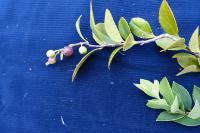
n. shrub to 2 m, flowers blue-purple. Red clay soil (collection: Michael J. Balick #4878)
Example: A stem of this shrub is sharpened and used to dig a hole for planting kava. When a person plants kava in a hole made from this stick, there is the belief that it will make kava root stems strong and large. The fruits are edible when ripe and said to be sweet.
bookmarknispeheñ
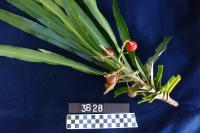
n. sparsely branched tree, 2. 5 m tall (collection: Gregory M. Plunkett #3628)
Example: This plant is used to make a grass skirt for women. There are two different methods decribed. In the first, collect the leaves, tear off 1/2 of the leaf and pleat the halves. Then dry these in the sun by hanging them from the midrib. After they are dry, weave them into a skirt. In the second, take one leaf at a time, tear the leaf down the center and throw away the midrib. The soft part is used in making the skirt by holding a piece of twine between your toes and under your armpit. Weave the length of the twine with the leaf. The let the pieces to dry in the sun for 2-3 days. The skirt can be thrown in the sea before drying to make the skirt white. Bark of inhao is usually used as twine. Retted strips of leaves, later sun dried, can be used to make pillows. When dogs or humans have fish poisoning this plant can help. Take 2 leaves and pound them (use 1 leaf for dogs) and mix with 1/4 cup of water. no further instructions given. (OR - Leaves to cure ciguatera, chew 1 leaf and swallow juice and spit out fiber. Or extract juice into a cup to drink 1x. Give juice + water in cup for dog that is sick.) There is also a belief that you can use the whole stem of this plant as a digging spade to plant sugarcane so the sugarcane is soft and sweet.
bookmarknodieg
n. a bundle of reeds; also "nohudieg"
bookmarknomropom
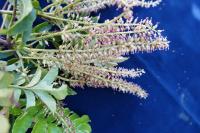
n. shrub to 2 m, flowers white (collection: Michael J. Balick #4874)
Example: This plant is an indicator of rich soil, especially up on the hills from the coast. Therefore, this is where people choose to do their gardens. This specimen is in red soil that is not rich so it does not grow tall, but in the mountains it does grow tall and that is where gardens are planted. Wood from the tree is used for carving.
bookmarknopou
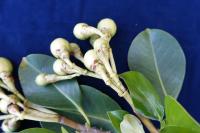
n. tree to 5 m, dbh 10 cm (collection: Michael J. Balick #4881)
Example: The wood of this tree is used to make house-posts, it is strong. The leaves are used as a compost for the taro patch; line the hole with the leaves of this tree, then place soil over that and plant the taro. When the fruits are ripe, local people say that the hermit crabs are "fat" and ready to collect and eat. When a person is in the forest and there is no coconut fruit fiber to start a fire with, use a dry stick, shave it and use a match to start a pile of this tinder to make a good fire. The wood is said to be "oily." This gives it a nice aroma. To perfume coconut oil, drop the dry flowers in it--use 1 handful of dried flowers added to a pot of oil boiling on the fire while making it. Strain out flowers and the oil smells good. Flowers can also be added to the oil once it is bottled to perfume it.
bookmarknop̃ou
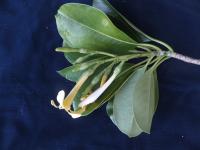
n. tree. Found in the village, usually grows in the hills. (collection: Ashley A McGuigan #16)
Example: 1. Lot of oil in the heartwood so it is good to start a fire, split it into small strips and you can light it for a fire. 2. Calendar plant – when the fruits ripen people know that this is the best season to eat the big hermit crab – meaning that they are fat.
bookmarknouhap̃
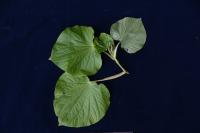
n. shrub, 2. 5 m tall (collection: Gregory M. Plunkett #3511)
Example: 1. Use the leaves to put in a hole where taro is being planted, as a sort of fertilizer--it rots easily and adds value to the soil. To protect a person from spirits if you are going to an unfamiliar place, take the young inflorescence and put behind your ear. This plant is a sort of "spiritual kava." 2. Flowers are put behind one ear, any side, to allow a person to pass through sacred places. For protection of the spirits especially if you are familiar with this place. On EAST SIDE, put one leaf under pillow before sleeping so that the lady spirit will not disturb the person. Only for men – spirit likes men, and wants to have sleep with them. If she gets pregnant, you must follow her to look after the kids in the spirit world so you leave this one (you die). 3. The small, straight stems of this plant are used as rafters to weave thatch. 4. Children make bows and arrows from the stems as well as spears for fishing.
bookmarknuka
n. leaves for an oven
bookmarknumta
n. shoots of taro for planting
bookmarknumurumu
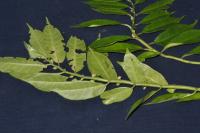
n. epiphyte on Syzygium tree, growing in secondary forest along trail above river. old fruits. (collection: Gregory M. Plunkett #3660)
Example: Put several leaves of this species together to wrap food, especially the fresh water eel, and to carry plants of taro, kava, holding the leaves over one’s shoulder to carry these crops. Used as a baby’s remedy for when the baby is crying too much because the parents are having to much sex. The baby will also be slow to grow and be thin. To remedy this, must wash the baby with the following mixture: nekei atimi (bark), nohos atimi (green skin of the stem), nepnatimi ataman (part not specified). Scrap about 1 inch cubed of the nekei atimi into your hand along with 1in x 4in of the first layer of the green skin of the banana stem (nohos atimi), and the top 8 leaves from about two separate branches of the nepnatimi ataman. Bind all ingredients together and pound them and put everything in the baby’s water for bathing. Wash the baby in water made with this mixture. Do not wipe the baby dry but let it air dry. The next day when you wash the baby with soap, you must re-wash them with the mixture again. Do this for 5 days with the same water mixture. It may small bad but that is okay. Finally on day 5, take the juice from the outter layer of skin on the stem of the banana, nohos atimi, and give a full spoonful of the juice to the baby to drink. Other plants can be added to the bathing water but these are the three primary ingredients.
bookmarkoho
v.n. to bear fruit as a tree
bookmarkohod
n. bundle of leaves, as of nasiaij
bookmarkreseiheto
n. a second growth, as grass that springs up after being burned
bookmarktite
adj. ripe early in the season
bookmarkucjicjid
v.a. to heap up earth to taro
bookmarkucsiligei
v.a. to pare off rind
bookmarkugnyiv
adj. rich; good, as applied to fruits
bookmarkuman
n. garden
bookmarkupuhas
v.n. to sprout
bookmarkwud yi encreucaig
v.a. beat so as to shake a tree
bookmarkyecreig
adj. beginning to be ripe, as fruit
bookmark